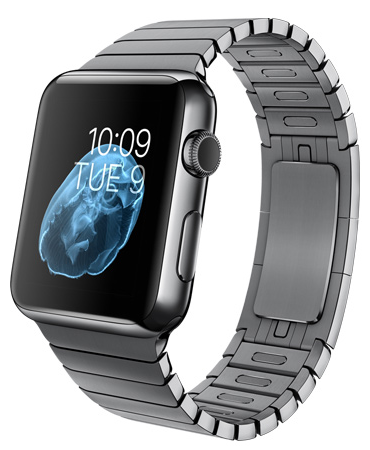September 11 2014
Apple Watch

Apple unveiled its watch on Tuesday, dubbed simply Apple Watch. The announcement marked the culmination of years of rumors surrounding the company’s interest in the category. Given the level of innovation in this first version, the company had indeed been actively working on a watch for years.
I love watching Apple work. There is no other company that combines such different disciplines and directs so many people to produce so few products for so much profit. Beneath the polish of the keynotes, sophistication of the hardware, and elegance of the software is undoubtedly a chaotic jumble of schedules, lists of known issues, and legions of frantic overworked employees. However, unlike other companies (like Amazon and its Fire Phone), Apple focuses on the product, not the process, and the products are a pleasure to use.
I started following Apple in college, back in 1999, and I finally bought my first Mac, a 12” PowerBook, in 2003, along with an iPod. I loved both. Those were such nice upgrades from my Gateway desktop and my Rio MP3 player. My Rio held ten songs. Ten. And my desktop was a big beige box. Apple’s PowerBook and iPod felt like devices from the future. My 11” MacBook Air still feels like that. Each product feels incubated, like Apple missed several internal deadlines to get the experience right.
That is Apple’s core competitive advantage: patience. It has billions of dollars, thousands of employees, and experience with hardware and software, but so do other companies. Unlike other companies, Apple says, “No, it’s not ready yet,” and tinkers more. In the keynote, Tim Cook noted that they experimented with pinch-to-zoom as a zooming gesture but hated it. Their solution was the Digital Crown, reminiscent of the iPod click wheel. The new device again feels like Apple took its time.
Apple Watch does not need to be a runaway success. The iPhone and iPad have enjoyed tremendous success, but Apple’s iMac, Macbook, and TV dominate their categories as well. With Apple Watch, Apple is choosing another category where it can use its unique skill set to produce something compelling, something “personal”. Focusing on the style and fitness markets positions the device to a set of people who are already interested and willing to pay a premium for a premium product, and Apple’s massive ecosystem of companion iPhones and apps will help justify an expensive smartwatch to a broader set of people in time.
Think back to the original iPhone and iPad. In 2007, the original iPhone had no third-party apps, but it put the web in your pocket. In 2010, the original iPad had few apps for producing, but it was extremely nice for consuming. Those first generations were optimized for niche audiences, early adopters with disposable income who enjoyed premium products. Successive generations of iPhones and iPads have had far broader appeal, consistently adding hardware and software features to expand their reach.
Now look at the Apple Watch. This initial version might appeal to a relatively small set of consumers today, willing to pay $349 for a smartwatch, but imagine what the watch will do in 2019. The iPad has been out an equivalent number of years, and the iPad Air feels like a device from the future.
Apple Watch’s evolution will be fun to watch, and this first iteration looks worth the wait. The Messages’ “Heartbeat” option exemplifies that patience. Apple built a stylish watch that could take your pulse and tap it back to someone else, a phone to communicate through, and a software stack to reduce the entire experience to a tap–to share your heartbeat with someone you love wherever you are.
A great example of Apple in 2014.